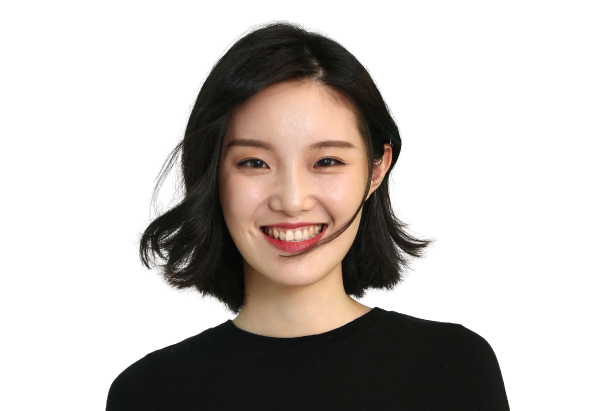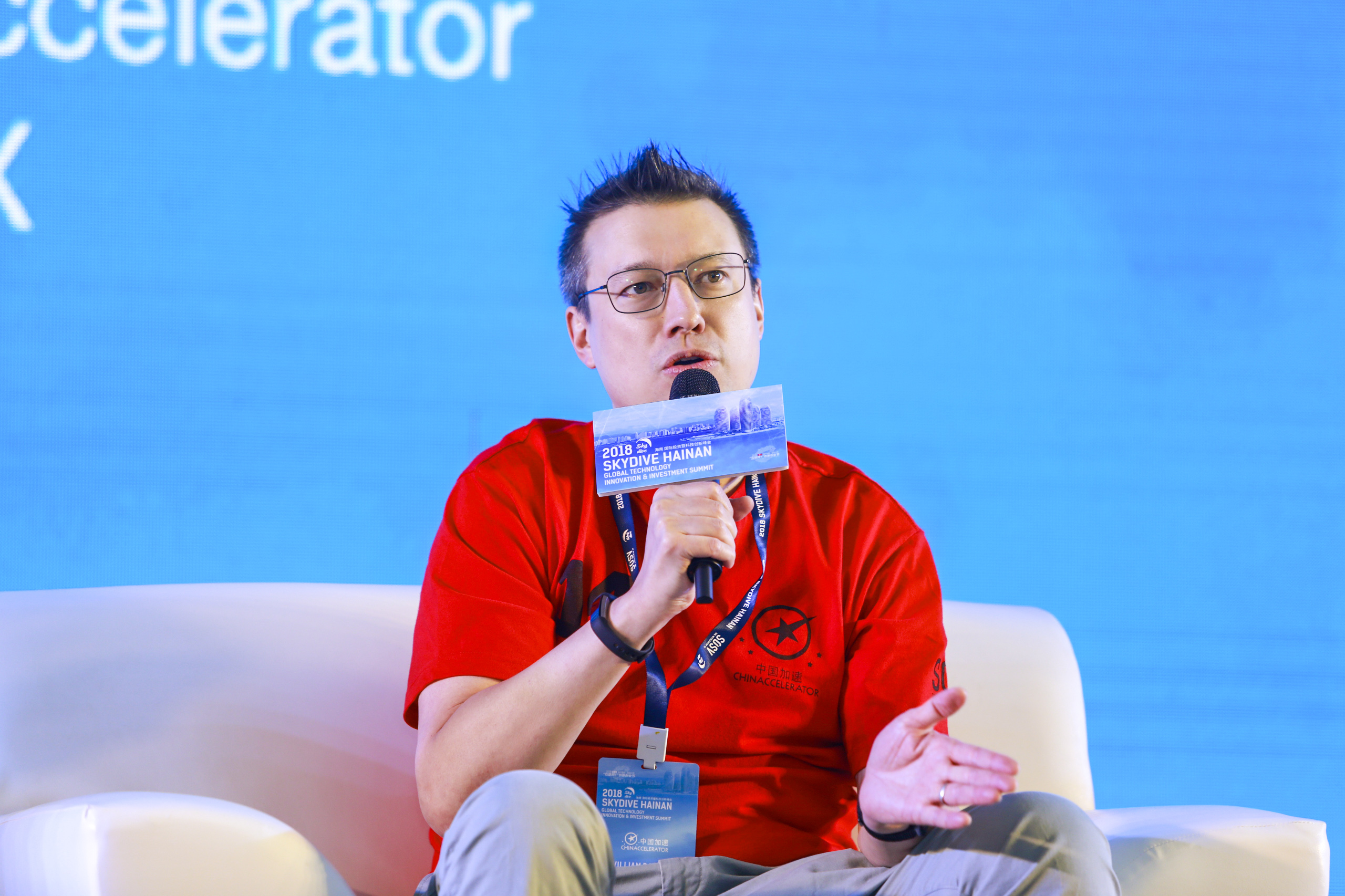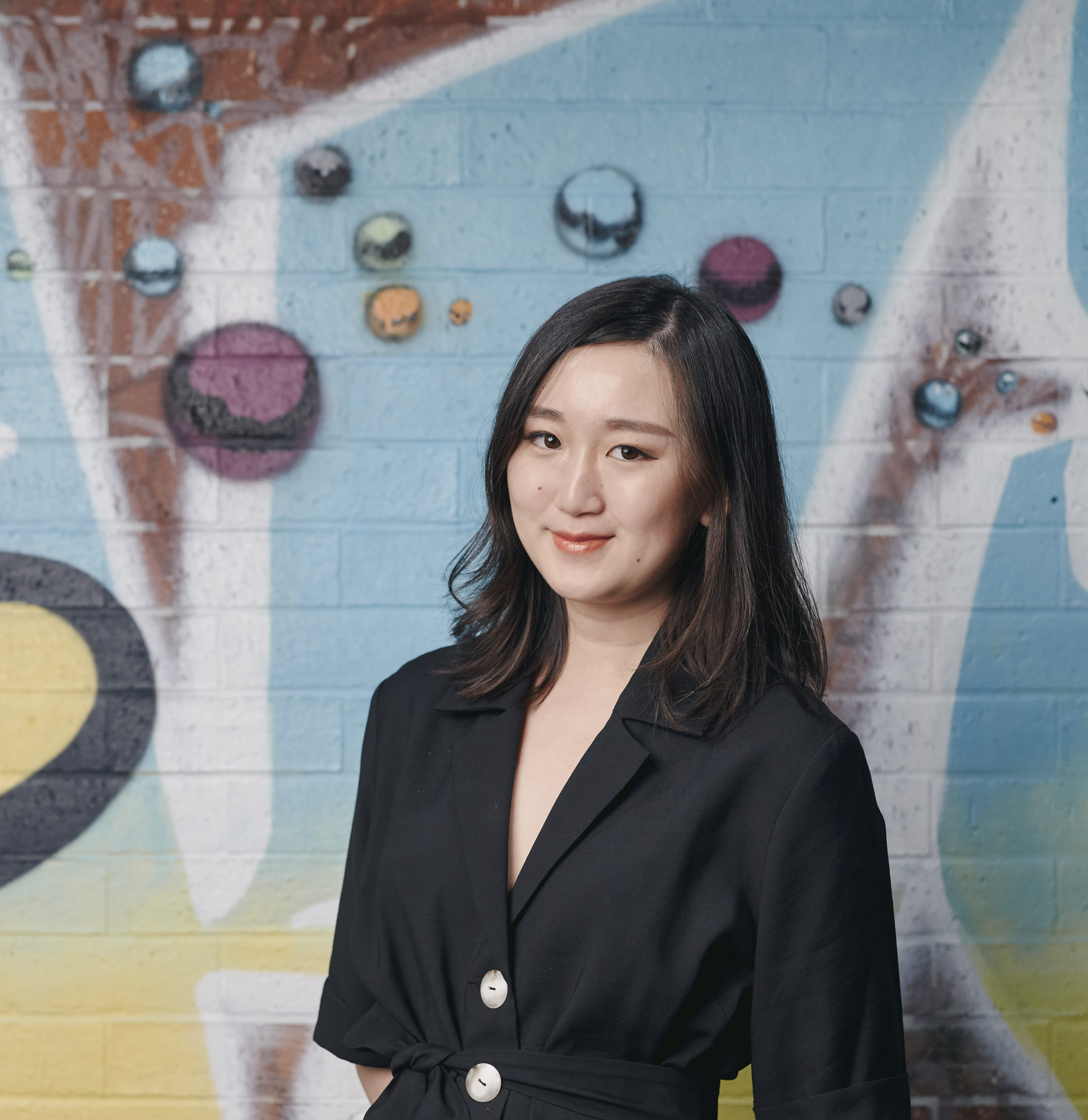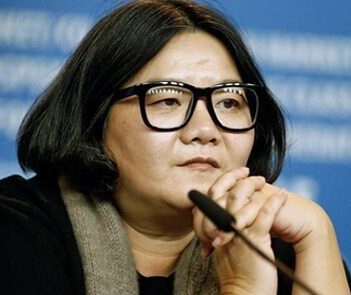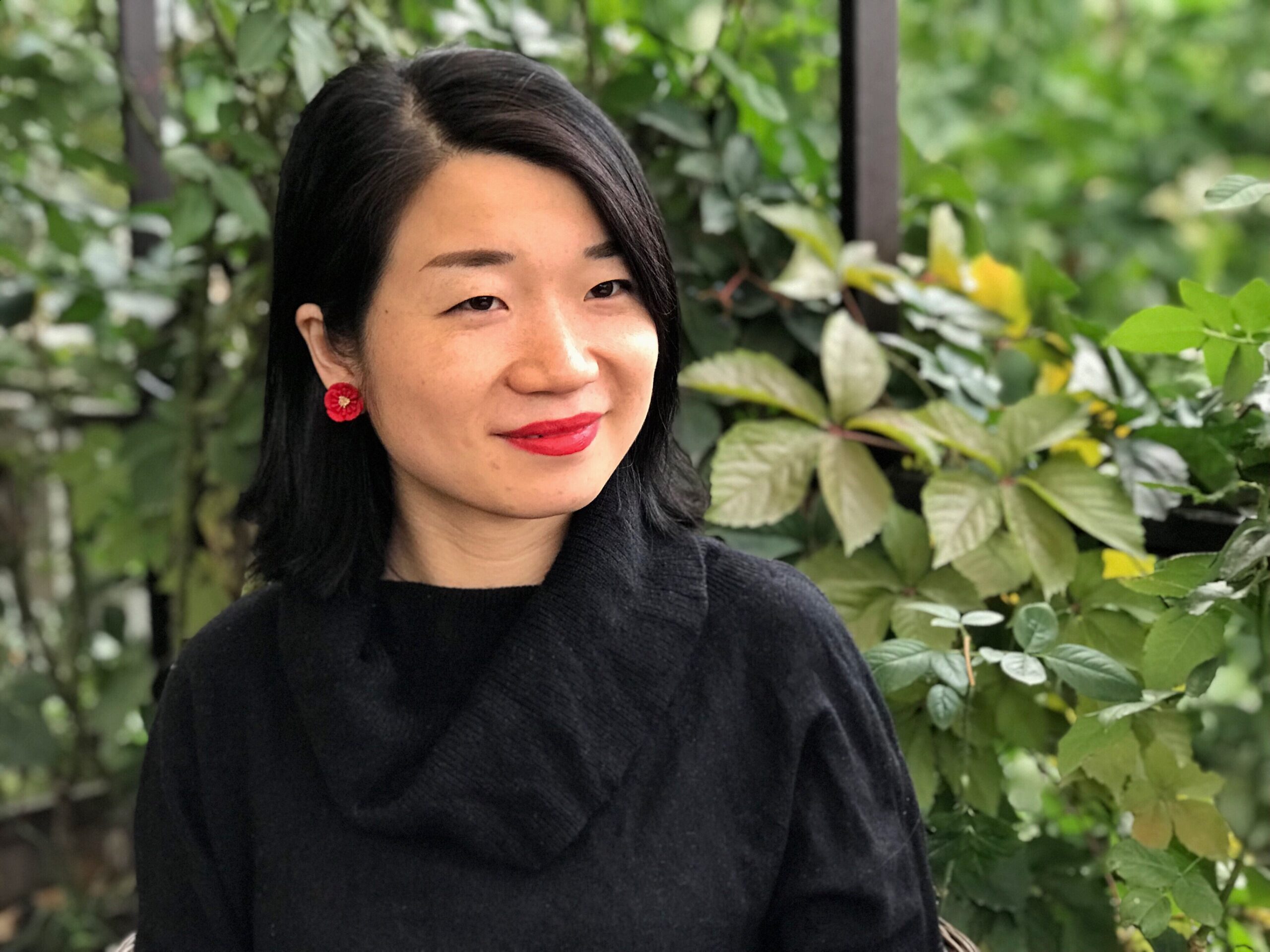Daisy Xiaoqian Guo
I am reducing financial uncertainty for Chinese designers and artists.
Daisy Guo was the co-founder and former CMO of Tezign.com, a digital platform for creative talent and content resources. Tezign is backed by top VCs such as Sequoia Capital and Hearst Ventures. She was part of the curating team for the Chinese pavilion at Venice Biennale 2012; also has experience curating exhibitions in Italy, Spain and Germany. Daisy was listed in Forbes 30 under 30 Asia list in 2017 and was featured on TATLER’s Gen.T China list in 2018 and Gen.T Asia list in 2019. She has spoken at the World Economic Forum Annual Meetings, the Economist’s Open Future Festival, Business of Fashion China Summit, The Information’s Hong Kong Subscriber Event, and the BBC Business Matters podcast. Daisy is also a contributor on Quartz and was featured by the BBC News at Davos. She is currently based in Shanghai, China.
Sign up to our newsletter.
AP: Tell us about your family background.
DG: My family came from Nanjing, the old capital of China. I was raised by my mother and my maternal grandparents. I was quite young when my parents divorced. Later, I found out it was because they have different personalities.
My mother is spontaneous, she loves art and is great at it. She also loves Taoism and likes the Chinese philosopher Zhuangzi, especially his ideas about ‘carefree wandering’. My mother was bold for her time. She was an accountant in a big corporation in Nanjing, where my grandma was one of the leaders on the management team of the company.
My mother didn’t like the role so she resigned and became a freelancer. She loves fashion design but didn’t get the opportunity to study design when she was young. Instead, she opened a small fashion boutique and designed clothes for friends. Over time, she built a reputation through word of mouth. From that boutique, she earned enough money to raise me and pay for my education.
My father is a radar engineer, so he is a rational person. Everything needs to be calculated and planned. During the Cultural Revolution, my paternal grandfather committed suicide so that event had a big influence on my dad. He was haunted by the family trauma.
My parents both studied in China and so they never talk about topics such as following your passion or how to figure out what is your passion. My generation was never taught how to communicate with people. That’s something I hope my children can learn.
AP: What was it like growing up in the 90s? Can you give us a sense of your childhood?
DG: At a young age, my family sent me to art classes to learn how to draw.
Growing up in China in the 90s, all parents cared about was education and where their children go to schools. Being the only child, both of my parents cared about my scores and which school I would attend. They thought that art was just a hobby but I loved it as I’m quite rebellious by nature, I think I got that gene from my mom. Due to the pressure of getting into a good high school and university, I dropped my art pursuits.
I excelled at math and also English so I was a bright student at school. Growing up, my mother wanted me to be a diplomat so she expected that I would get into the best diplomatic high school in Nanjing. My mother taught me to always be the best and to be the top in class. That planted the seeds for me to be competitive. Unfortunately, I didn’t get into the diplomatic high school as it was competitive.
I still went to a good high school but people didn’t care about art there. My high school has a lot of foreign teachers. The culture of the school is about how to be yourself and how to figure out and learn by yourself. The teacher acts as a mentor. I was always trying to be a good student but I didn’t understand much about empathy, passion and love. Those are qualities needed in art so it was a strange idea to do art at the time.
When we were students in China back then, there was no freedom or time for the arts or sports. Instead, we were encouraged to study more maths, physics, Chinese and English to get the highest scores. All of our spare time was taken by our teachers and tutors.
When it was time to research universities, I figured that even if I was in the top high school in Nanjing, we still couldn’t compete against others to get into the top prestigious schools such as Peking University and Tsinghua University. It was extremely competitive to get into those two schools. Most of my high school classmates went abroad for further studies. I was one of the few who stayed in China for university.
My mother hoped that I would get into Tsinghua’s Academy of Arts & Design so that gave me the opportunity to go to Beijing and visit the Art schools. While in Beijing, I figured out that there’s not only Tsinghua but another top Art school called Zhōngyāng Měishù Xuéyuàn (中央美术学院) or Central Academy of Fine Arts (CAFA). I visited CAFA and I thought that the school was different, you could feel the atmosphere of freedom.
At CAFA, everyone would express themselves by their clothes and the way they talk. My dream was to get into CAFA, my mom was disappointed because Tsinghua University was a prestigious brand. I participated in three art school examinations but the only letter I received was from CAFA, the other two didn’t send me offers. My heart was with CAFA and I think it reflected in the exams.
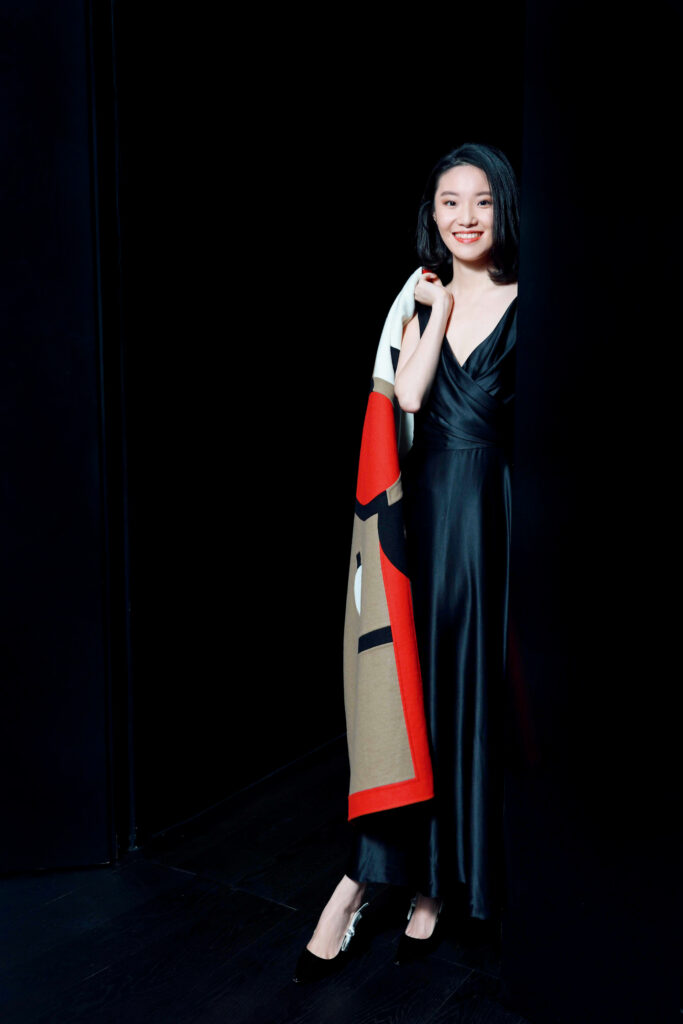
AP: What was the CAFA experience like and how did you meet your co-founder Ling Fan?
DG: CAFA is one of the top art academies in China and I studied architecture there. To be honest, I don’t have the passion to be an architect. It’s the aesthetics that I love. I just like beautiful things.
I was quite surprised that my classmates at CAFA didn’t really have a passion for art. They were trained to be art students. They come from prestigious high schools which have great art programs. I realised while I was there that I was studying with people who behave more like machines than artists. When we were young, we were trained to care about scores, our dream was to get the highest score so we optimise how we study for that.
The curriculum was frustrating so I skipped a lot of classes. I thought CAFA would give us a lot of freedom to follow our artistic pursuits but they were telling us what not to do instead, such as: “Don’t look up to Zaha Hadid. They are avant-garde architects. They only use technology. You must learn how to draw a house by sketching.” I thought to myself, ‘We have cameras everywhere, why do we have to sketch by hand?’. I don’t think this is the school’s problem, I think it’s an issue in the whole education system.
At CAFA, classes were both in design and engineering. I like architecture school more than the other art faculties because architecture uses a combination of both right and left brain, a mixture of aesthetic sensibility and logical thinking. As architects, we have to design the facade of a building but we also need to think about how to construct it. Architecture school gave me the framework to observe the world. It taught me that complex objects can be divided into systems, structures, and small building blocks.
When I was at CAFA, I was fortunate to have met my teacher, Ling Fan, who became my co-founder at Tezign. He was a recent graduate from Princeton at the time and gave both encouragement and criticism, lots of it.
We realized that there was a lack of lectures and workshops from architects themselves in the curriculum. Ling Fan organized several students to establish a student club. We organized a lot of talks with different professors and famous architects globally. Those talks changed how I think about architecture. I became more open-minded. From that experience, I realized that I don’t have the dream to be a professional architect.
“I thought CAFA would give us a lot of freedom to follow our artistic pursuits but they were telling us what not to do instead, such as: “Don’t look up to Zaha Hadid. They are avant-garde architects. They only use technology. You must learn how to draw a house by sketching.” I thought to myself, ‘We have cameras everywhere, why do we have to sketch by hand?’’
AP: How did you get involved in the Venice Biennale and what did you learn from that experience?
DG: During my time at CAFA, I met another teacher who is a famous international curator. He does a lot of curation work for the Ministry of Culture. I was his assistant for the Chinese pavilion at the Venice Biennale, so that gave me the opportunity to go abroad and to participate in the top architecture exhibitions. Something that I’ve always wanted to do. We would invite many famous global architects such as Zaha Hadid and Rem Koolhaas (the designer of the CCTV building in Beijing) to work with us. I was able to have close interactions with them due to the nature of my work. The exhibition gave me the chance to see different design trends from different countries and to learn how the top architecture studios work.
Design plays one important part in architecture but there are other key parts such as financing and investments. You also have to think about how to acquire land from the government or from private owners and invite the best architects to design. All those elements changed my perspective of architecture and on the whole real estate industry.
In Europe and the US, the whole architecture industry is already on a decline. Nobody wants to put more money into real estate after the 2008 financial crisis. We went to Portugal in 2012 for a visit and the top architects were showing me their unfinished buildings. They hoped to get a connection to the Chinese government and also my teachers so that they have the opportunity to build buildings in China. We have a saying — tán huā yī xiàn (曇花一現) which means, “love is short-lived, it only flashes for a second.”
History is always repeating itself. We can see the decline of the real estate industry in Japan back in the 1990s. The bubble collapsed all of a sudden. The booming era in China for architecture, leading up to the Beijing Olympics no longer exists, it’s a mirage. I once read an article about the top management teams being laid off because of the decline in financial appetite for huge projects.
During that period, I had one year to reflect on everything and my next steps before I graduate. When I was in my 20s, each path I chose or each decision I made was rational. I was terrified of the future because my talented classmates had a passion for design. When you have the passion, you will figure it out, regardless of whether the industry is good or not, you’re committed and willing to endure the suffering. I don’t have the passion like them since I never make decisions based on emotions. I only use my brain to think and calculate, so I figured that I need to find a new industry that’s growing and isn’t on a decline.
AP: How did you initially get into tech startups?
DG: In 2013, I was selected to work on designing the Spring Festival’s window exhibition at the Empire State Building. It was my first time visiting the US and I worked on the project for two weeks in Chicago and in New York. During that trip, I visited my high school classmates in New York and also went to Boston to see my teacher Ling Fan, who was finishing his doctoral degree from Harvard University.
While I was on the East Coast, Ling Fan contacted his students and several friends to give me a tour of Harvard and MIT. I visited the MIT architecture school but I also went to other parts of MIT. I dropped by many interesting lectures, including one with the founder of Dropbox, Drew Houston. There was a tech startup industry that Dropbox belonged to, which I didn’t know existed at the time in China. Friends of Ling Fan also introduced me to the Harvard Business School, which was running a design workshop with IDEO at the time. That trip opened my mind about the possibilities of other industries and I started doing further research.
Later on, I visited California since Ling Fan was teaching human interaction design at Berkeley. I also have high school classmates working at Frog Design and LinkedIn. Once again, Ling Fan asked his friends to give me a tour of tech companies including Facebook and Google. Facebook was very open back then, people could just line up for a free lunch, and I was definitely there waiting for the free lunch!
So a Chinese person approached me to start a conversation. He asked about my background so I told him that I went to CAFA, he immediately recognized that it’s a top art school in China. He then asked me, “Why are you here?” and I replied, “We have a community full of students. We have a community of all different designers. We hope to provide services to startup owners. If they need business card designs or logo designs, we can provide the designers for it.” This was the humble pitch of what eventually became Tezign. He then said, “Awesome. I always hope to design a Chinese game so that we can feature Sun Wukong (孫悟空). Tomorrow, we have a pitch day in Silicon Valley, come and join us.” He gave me his business card, which I then gave to Ling Fan. We later found out that this person was Haiping Zhao, the first Chinese engineer who works at Facebook when it was a team of about 20 people. He was senior by that point and was deemed as a god in the Chinese software engineering community.
Ling Fan and I went to the pitch day and made connections with the whole community. We talked about our ideas and they thought it was awesome. I then flew back to China and although I didn’t think it was going to be a career, I thought that we needed to try and test our idea. Ling Fan was still in the US while I was in Beijing so I gathered several friends and classmates to get started. We received projects through referrals and by marketing our skills. It all began as a community of designers for hire initially.
I knew that students at CAFA need to earn a living and that a lot of brands were hiring students but agencies don’t usually pay well. Being the idealistic person, I thought that artists and designers need to earn enough money for them to survive first before they have the time and space to think about interesting topics like spirituality, politics or international issues. If they can’t survive, how can they reflect? They will never have the time and space to create interesting art pieces. We wanted to build a community and have projects so that they can earn a living. They can then use the money to invest in themselves and their art. That was the beginning of Tezign. In the beginning, it was just several students and my teacher, Ling Fan in the US when we first got started.
In 2014, Ling Fan finished his PhD and went back to Beijing. We signed up to participate in a startup event at Microsoft and won the competition. There were several different investors there. They were interested in our idea and because of Ling Fan’s incredible CV, they thought we were credible. We only had 10 slides in our deck to get our angel investment of $1.1 million USD.
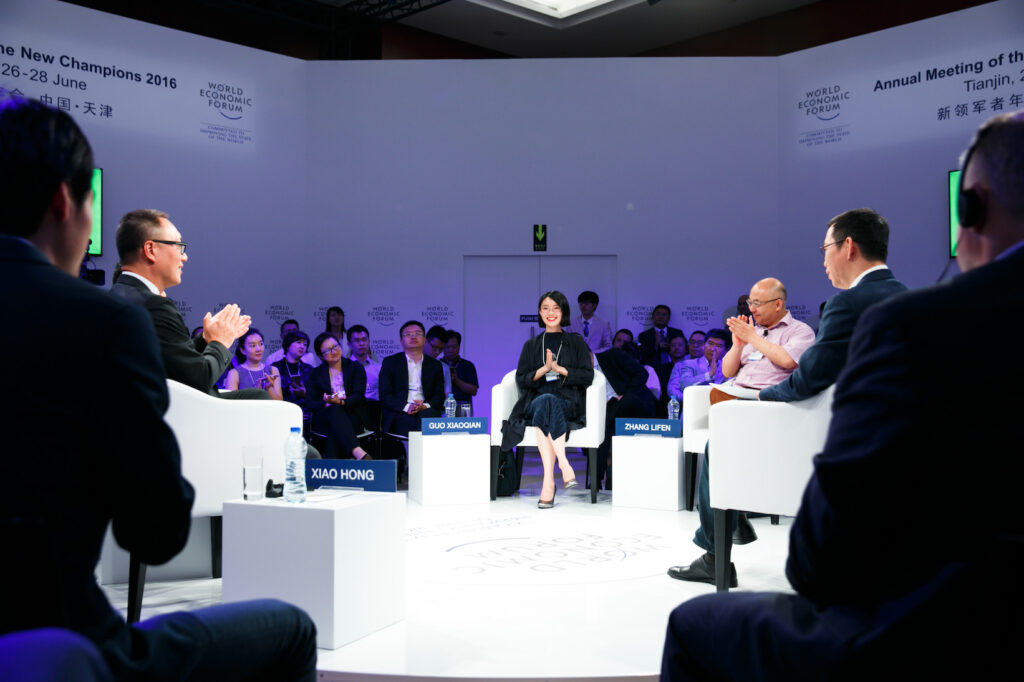
AP: So you’ve got the angel funding and you’ve got the community. How did the team come up with the current vision and get funding from Sequoia Capital and Hearst Ventures?
DG: For our A round, Sequoia and several investors were interested but they weren’t sure what the future would look like for us. For me, it was just a simple math formula. If we want to be listed, then we need to figure out how much we need to earn, what kind of revenue and profit we need etc. When we did that calculation, we figured out that if we serve startups, we would never survive, we wouldn’t have enough predictable revenue. They are early adopters but they are not our targeted customers.
I had to trust my intuition. As I was figuring out the profile of our new customer, I received a call from an agency, whose client is Unilever. Unilever has a brand called Clear and they wanted to hire the designers in the Tezign community to help create ads. I had a conversation with the person working on the campaign and told him that he misunderstood the purpose of Tezign and explained to him our mission of helping our designers and illustrators to do more artistic work. They ended up hiring us and the amount they paid was very good for the illustrators.
For one piece of illustration, a startup might only be willing to pay $100 but the marketing department at Unilever would pay $2000. We received more projects from Unilever after that first one since they have a lot of brands. During that period, I searched online to find different inspirations and to study different models of creative agencies like WPP and Dentsu since I have no idea what I was doing.
There was an app where a user can have a conversation with someone who is senior in the industry. It’s like skill-share, but more focused on building a connection with mentors. I tried it myself and connected with a senior management leader from a top creative agency. He taught me a lot about the creative industry and advertising. I soon realized that we need to be in advertising. If we have clients like Unilever, we just need four or five of those companies and we’ll meet our revenue goal.
During that period, I was reading a book, Mark Benioff’s Behind the Clouds. He wrote about his Salesforce journey, Software as a Service, and the difference between serving big corporations and serving individuals. It gave me a lot of inspiration. He mentioned how he leveraged the resources from the World Economic Forum (WEF) so since I was already a WEF Global Shaper, I was selected to attend Summer Davos to represent the young in China. The first time I went to Summer Davos, the Shapers had an intimate conversation with industry leaders, including a session with Marc Benioff. I got the chance to ask him lots of questions and from that conversation, we decided that Tezign would need to be a SaaS company.
“During that period, I was reading a book, Mark Benioff’s Behind the Clouds. He wrote about his Salesforce journey, Software as a Service, and the difference between serving big corporations and serving individuals. It gave me a lot of inspiration. He mentioned how he leveraged the resources from the World Economic Forum (WEF) so since I was already a WEF Global Shaper, I went to the summer Davos to find clients.”
AP: Tell us more about how Tezign incorporates artificial intelligence into its SaaS platform.
DG: Tezign has three parts. The first part is the ‘creative studio’ which consists of the community of designers. They can provide a lot of different content. We have a team to specifically manage this ecosystem.
The second part is the platform, which only our team has access to, not the clients. We have the data from different designers so we’re able to match them with the right projects. At the beginning, we just match them with projects from startups because they were our original targeted customers. Later, we match the designers and illustrators with projects from Unilever, Alibaba etc. We started building a sales team after Alibaba and Unilever came on board. We even offer strategy service to our clients, then split the strategy into smaller projects for the community to execute by leveraging the platform.
The third part is artificial intelligence. Unilever has an Innovation Center, which uses off-the-shelf SaaS products to help Unilever transform into a digital company. They need to build data capabilities so that they can monitor the kind of content that would have an impact on sales and online channels. Since we already provide the creators and strategies, we can also provide the data analytics too, so we build several different tools for their Innovation Center.
Unilever has an e-commerce department, which needs help with a lot of graphics work during their shopping festival campaigns. We thought it was an opportunity but not a great one for our designers since they are simple tasks. We ask ourselves, why don’t we use artificial intelligence to do that? If you want to hire the top creative studios or top creative individuals, none of them will take on basic graphic tasks. So we’ve started building these data and AI tools for our clients at the start of this year.
AP: Why did you leave Tezign and what are you focusing on now?
DG: The path that I have chosen so far has been rational, I’ve only used my brain when making decisions. In 2017, my maternal grandmother passed away. I didn’t have the time to stay longer in Nanjing to stay with my family. It was a dark period for me. I didn’t know how to digest the sorrow so I started reading books about family trauma. I also read some spiritual books from Jiddu Krishnamurti and Thich Nhat Hanh and while I was reading them, I realized that I neglected all the important essence of life like family and friends. At that moment, I figured out Tezign is not my passion anymore.
During the chaotic experience of COVID-19, I couldn’t go back home and had to work online with my company. The workload was high. Each day I woke up around 9 am and finished work around 2:30 am. My back was hurting and the pain just made me reflect on my life and my health. So I thought, maybe it’s time for me to give myself some space and also reserve some time for my family.
Last April, my friend introduced me to a good Tai Chi teacher. I started doing daily meditation for 20 to 30 minutes a day. Meditation empties out all the noise from my brain and lets me reflect on the simplicity of life. It’s a sudden self-awareness and I decided soon after that I didn’t want to work anymore.
I told my team members, my husband and my co-founders that I have doubts about the whole system of consumerism since I’m not a big fan of luxury brands. During that period, we were serving a big US supplement brand but I don’t believe in those products. It doesn’t seem natural to me so I feel awful that I helped market the products because I wouldn’t buy them myself. I can feel the conflict within. When I explore this conflict further, I understand my inner motivation better. The whole Tezign startup period was great and I’m grateful for it, but that was version 1.0 of Daisy Guo. Full of ego, full of ‘I want to prove, I want to let them know that I’m capable of doing these things.’
So I resigned and after six months of rest, I still don’t know what to do but during that period, I did therapy, meditation and Tai Chi. I can feel my body is reinvigorated, everything feels better. I also started rebuilding the relationship with my dad too. There are things which deserve my attention but I’ve always just neglected it. Someday you have to come back to do them so maybe it’s time.
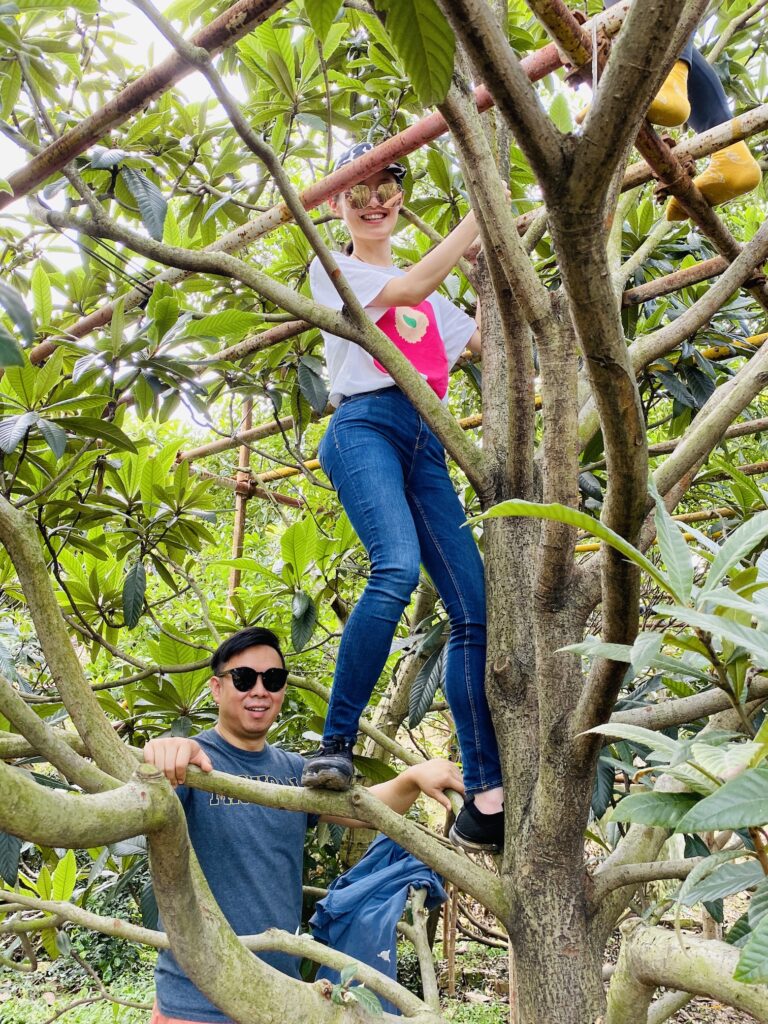
AP: Can you tell us more about your volunteering activities?
DG: When I was in the Global Shaper community, we were taught to give back to the community. It’s a community full of brilliant young people with diverse life experiences. I always thought that I was the fortunate one who had the privilege to attend Davos and have intimate conversations with people such as Mark Benioff or Jim Yong Kim, the president of the World Bank. When you are with those leaders, you can feel their energy and you become inspired. I wanted all the Shapers to have a similar opportunity.
In Shanghai, we have our own hub full of different foreign Shapers. I organize a lot of talks and lectures. We invite different leaders from different industries to have intimate interactions with our Shapers, to be our mentors or just to have dinners with us. We learn a lot from them, not only about management but also about their philosophy on life.
Before, I was interested in management, the development of an organization and the culture of a corporation. Now, I want to ask all sorts of leaders to have conversations with Shapers, not just from tech startups but from the sustainable farming industry or even from the healthy food industry. When I cook and look at a recipe, I have a completely new perspective of all the energy and the type of ingredients I put into my mouth.
“During the chaotic experience of COVID-19, I couldn’t go back home and had to work online with my company. The workload was high. Each day I woke up around 9am and finished work around 2:30 am. My back was hurting and the pain just made me reflect on my life and my health. So I thought, maybe it’s time for me to give myself some space and also reserve some time for my family.”
AP: Who do you think has the most profound impact on your life?
DG: It’s definitely my mom. She’s brave and appreciates freedom. It’s hard for Asian parents to do that.
AP: What three pieces of advice would you say to a young Asian Pioneers reader who wants to follow your journey?
DG: First of all, I hope that they will have a good relationship with their parents so their parents will support their decisions. Otherwise, everything will be difficult if their parents are not supportive. Secondly, I just hope all of us have the courage to explore different opportunities outside of our comfort zone. It’s always an adventure ahead, you don’t know what will happen to you, but just don’t lose the courage to try everything. The third advice is that I hope that we all would have more time to spend with our loved ones and ourselves. To look deep into our heart to figure out what we really want and desire, and who we want to become.
AP: Lastly, what’s your favourite book?
DG: This Light on Oneself: True Meditation by J. Krishnamurti.


